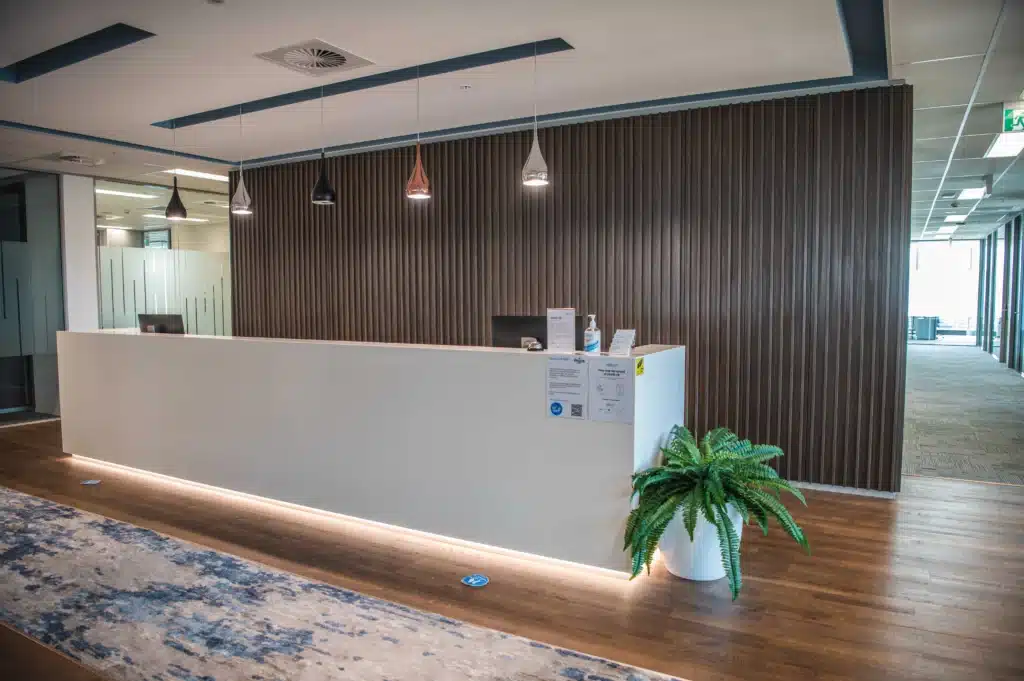Australian Study Visa Requirements: Your Comprehensive Guide to Student Visas
Australia consistently ranks among the top global destinations for international education, attracting hundreds of thousands of students annually. However, navigating the intricate Australian study visa requirements can be a daunting process. The difference between a successful application and a costly rejection often lies in meticulous preparation and a precise understanding of every rule and document, supported by up to date guidance from the Department of Home Affairs student visa framework.
At Jameson Law, our expert immigration lawyers have extensive experience guiding international students through this complex journey. This comprehensive guide breaks down the various student visa pathways, crucial requirements like the ‘Genuine Student’ test, essential financial and English proficiency evidence, and critical application tips to maximise your chances of securing an Australian student visa successfully.
Choosing the Right Australian Student Visa for Your Educational Goals
Australia offers several distinct visa pathways tailored for specific educational pursuits and accompanying family members. Understanding these options is the first critical step in your application process and should be done alongside reviewing official criteria on the Immigration and citizenship portal.
Student Visa (Subclass 500): The Primary Pathway
The Student Visa (Subclass 500) is the most common and versatile option, covering the vast majority of international student applications. This visa permits you to undertake full-time study at a wide range of registered Australian educational institutions, including:
- Universities (Bachelor’s, Master’s, PhD)
- Vocational Education and Training (VET) providers
- English Language Intensive Courses for Overseas Students (ELICOS)
- Primary and secondary schools
- Non-award courses (e.g., study abroad programs)
You can typically stay for up to five years, aligning with your course duration. Holders of the Student Visa (Subclass 500) generally have work rights, allowing up to 48 hours per fortnight during study periods and unlimited hours during scheduled course breaks. Students undertaking Masters by Research or Doctoral degrees face no work hour restrictions. For tailored advice on how this visa fits your long term plans, it is sensible to speak with a migration lawyer who understands both student and permanent pathways.
Student Guardian Visa (Subclass 590): Supporting Younger Students
The Student Guardian Visa (Subclass 590) is designed for parents or relatives (aged 21 or older) who need to accompany and provide care for an international student under 18 years old (or under 21 in exceptional circumstances). This visa requires guardians to demonstrate sufficient funds to support both themselves and the student, maintain adequate health insurance, and meet stringent character requirements. Guardians are generally not permitted to work and can only undertake limited study (e.g., English language courses up to 20 hours per week). The guardian’s visa typically aligns with the student’s visa expiry date, and welfare rules for younger students are explained in detail on the Home Affairs page about welfare and custody arrangements for students under 18.
Training Visa (Subclass 407): Professional Development
The Training Visa (Subclass 407) caters to individuals seeking structured workplace training, professional development, or research activities for up to two years. Unlike the Student Visa (Subclass 500), this pathway mandates sponsorship from an approved Australian organisation. The application process involves both sponsor approval and an individual visa application, potentially extending total processing times. The training must directly align with the applicant’s existing qualifications and career objectives, with clearly documented learning outcomes. Work rights are strictly limited to the approved training activities, making this visa unsuitable for general employment purposes. Employers can also review sponsor obligations on the government’s pages about bringing someone for temporary activities.
Understanding these distinct pathways helps you select the correct visa before commencing your application, optimising your chances of success. Your Australian study experience can also accrue valuable points towards future permanent residency applications, a key consideration for many international graduates who later seek advice from a specialist immigration lawyer.
Essential Documents & Requirements for an Australian Study Visa
The success of your Australian student visa application hinges on fulfilling a range of critical requirements, with recent changes emphasising genuine study intent. Staying across the latest policy updates via the Home Affairs news and policy updates page is important, as requirements can evolve quickly.
The ‘Genuine Student’ (GS) Requirement: A New Focus
A significant change to Australian student visa requirements occurred in late 2024, when the ‘Genuine Student’ (GS) requirement officially replaced the previous ‘Genuine Temporary Entrant’ (GTE) test. This new framework fundamentally shifts how the Department of Home Affairs assesses student visa applications, demanding that applicants explicitly demonstrate their primary intention is genuine study, not using the student visa as a pathway for immigration to Australia.
The GS assessment involves a detailed questionnaire and evaluation of factors such as:
- Your educational background and academic progression.
- The relevance of your chosen course to your past studies and future career plans.
- Your genuine interest in the specific course and institution.
- Ties to your home country that would incentivise your return after study.
- Reasons for choosing Australia over other study destinations.
Universities and colleges also apply their own GS screening processes, such as those outlined by institutions like the University of Canberra, to make sure applicants understand their responsibilities. Applicants must provide clear, coherent explanations for any gaps in education or career progression and articulate realistic career goals. Applications lacking a clear educational pathway or presenting unrealistic post-study intentions face a significantly higher risk of rejection. Expert legal guidance can be invaluable in crafting a compelling GS statement and aligning it with your overall student visa strategy.
English Proficiency Tests: Meeting the Standards
Australia accepts several specific English language tests for student visa purposes. As of early 2024, accepted tests include IELTS Academic, PTE Academic, TOEFL iBT, and Cambridge C1 Advanced. Crucially, online versions of these tests are generally not accepted for visa purposes.
Minimum score requirements vary by course and educational institution, but a common benchmark for most university courses is an IELTS Academic overall score of 6.0 with no band below 5.5. Universities often demand higher scores (e.g., 6.5 or 7.0). PTE Academic offers computer-based testing with typically faster results (within 48 hours), and many students also rely on recognised preparation providers such as IDP IELTS centres for coaching and practice material.
Test scores are generally valid for three years from the test date. Students often underestimate the preparation time and score requirements, leading to visa delays if retakes become necessary. Investing in preparation courses (costing between AUD 500-1,500) can significantly improve your chances and should form part of your broader overall migration cost planning.
Financial Evidence: Demonstrating Capacity to Live & Study
Proving you have sufficient funds is a non-negotiable requirement. You must demonstrate access to funds that will cover your full tuition fees (paid upfront or through acceptable financial guarantees), living expenses, and Overseas Student Health Cover (OSHC) for the duration of your stay. As of early 2024, the annual living cost requirement for a single student is approximately AUD 24,500, with additional funds required for dependants:
- Spouse/Partner: Additional AUD 10,330 per year.
- Child: Additional AUD 3,720 per child per year.
Accepted financial evidence includes:
- Bank statements showing consistent balances over at least three consecutive months (avoiding sudden large deposits that suggest borrowed funds).
- Documented education loans, including repayment schedules and guarantor information.
- Scholarship letters from recognised institutions.
Overseas Student Health Cover (OSHC) is mandatory and typically costs between AUD 600-2,000 annually, depending on coverage and duration. You can compare policies using official information on PrivateHealth.gov.au and providers such as Bupa OSHC or Allianz Care. It must cover the entire proposed period of your stay. Immigration officers rigorously scrutinise financial documentation, and applications with insufficient funds or suspicious financial activity are routinely rejected.
Health & Character Requirements: Essential for All Applicants
All student visa applicants, and any included family members, must meet Australia’s stringent health and character requirements:
- Health Examinations: Mandatory for most student visa applicants, particularly those from countries deemed to have higher health risks. Examinations must be completed by panel doctors approved by the Department of Home Affairs. Standard tests include chest X-rays and blood tests.
- Character Requirements: Involve providing police clearance certificates from any country where you have lived for 12 months or more in the past 10 years, since turning 16 years of age.
These requirements become more complex when dependants are included in your application, as each family member must meet the same health and character standards, which can extend processing times significantly. The student visa application process itself demands meticulous attention to detail and proper document preparation to avoid delays that could impact your planned course commencement date.
Submitting Your Australian Student Visa Application: Key Strategies
The ImmiAccount platform is the mandatory online portal for all Australian student visa applications. While user-friendly, many applicants encounter delays due to common navigation errors and technical issues, particularly during peak application periods.
ImmiAccount Application Tips for a Smooth Process
To ensure a smooth submission, consider these strategies:
- Start Early: Create your ImmiAccount profile at least two weeks before your intended submission date. Document upload failures and system timeouts are common during peak periods (October to February).
- Document Format: Upload all supporting documents as PDF files, ideally under 5MB each. Larger files can cause automatic rejections or system errors, leading to delays.
- Complete in One Session: Whenever possible, complete every section of the application in a single session. Partially completed applications may expire after 28 days of inactivity, requiring you to start over.
- Accurate Information: Double-check all personal details, course information, and contact details for absolute accuracy. Discrepancies can lead to extensive delays or even refusal.
Biometrics & Medical Appointments: Non-Negotiable Steps
After lodging your application, you will typically be required to attend:
- Biometric Appointments: These are scheduled through VFS Global or Australian Visa Application Centres (AVACs) in various major international cities. During peak seasons, availability can book out weeks in advance.
- Health Examinations: As mentioned, these must be conducted by panel doctors approved by the Department of Home Affairs. Using non-approved medical practitioners will result in automatic application rejection. Medical results are generally valid for 12 months, so some students opt to complete examinations early if planning multiple applications. Applicants from tuberculosis-endemic countries may face additional screening, which adds weeks to processing times. The examination costs typically range from AUD 300-500 depending on location and required tests.
Understanding Processing Times & Visa Conditions
Current processing times for Australian student visas vary significantly based on factors such as:
- Application Complexity: Complete and accurate applications are processed faster.
- Seasonal Factors: Applications lodged between November and January often face the longest delays due to holiday closures and peak application volumes.
- Country of Origin: Processing times can differ based on the applicant’s nationality.
Students receive automated email notifications regarding document requests, biometric appointments, and final decisions. However, it is prudent to check your ImmiAccount dashboard weekly to prevent missed deadlines. Official guidance about processing is also available on the Department’s global visa processing times page. Upon a successful visa grant, carefully review the specific entry conditions and work hour limitations attached to your visa before you travel to Australia, ensuring full compliance.
Final Thoughts on Australian Study Visa Requirements
Successfully navigating Australian study visa requirements demands meticulous preparation, precise documentation, and a clear understanding of the Department of Home Affairs’ expectations. The ‘Genuine Student’ requirement, stringent English proficiency standards, and comprehensive financial capacity evidence form the bedrock of a successful application. Furthermore, be prepared for extended processing times during peak periods, making early application a critical strategy for meeting your course commencement dates.
Professional immigration assistance proves invaluable in this complex landscape. Expert immigration lawyers are abreast of the latest policy changes, possess a deep understanding of document requirements, and can identify potential issues long before they derail your application. At Jameson Law, we have extensive experience assisting international students through this intricate process, helping them to avoid common pitfalls that frequently lead to visa refusals or lengthy delays. You can also review our broader resources on the true cost of migration to Australia to plan the financial side of your move.
Your next step should involve the diligent collection of all required documentation well in advance of your intended application date. Begin by securing your Confirmation of Enrolment (CoE), schedule your English proficiency tests, and meticulously prepare all financial evidence, including comprehensive health insurance coverage. Consider engaging professional immigration support from Jameson Law to maximise your chances of visa approval and ensure a smooth, stress-free transition to your exciting new life and studies in Australia.













